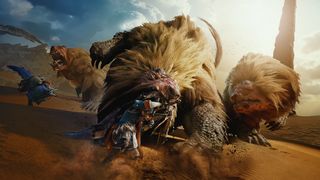Babylon 5's Ron Thornton on the secrets of spaceship design
Ron Thornton's passion for sci-fi has lead him to work on popular TV shows, including Babylon 5, Star Trek and Starship Troopers. Here he reveals the secrets to a successful spaceship design.
I really consider myself blessed that I was born at just the right time to experience the evolution of Space Science Fact and Science Fiction. I'm sure I was lying in my cot making gurgling noises as Sputnik 1 was launched, and the space race was on.
I grew up on a TV diet of Gerry Anderson's Supercar, Fireball XL5, Stingray and Thunderbirds, so I was scribbling spaceships in crayon back in the early 60s (something I still do), so it's no wonder really that I love designing and building sci-fi and space vehicles.
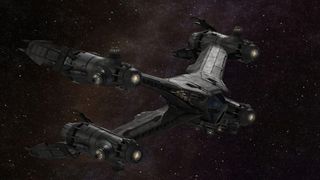
There are a lot of good spaceships designs out there. But what makes them good? I like to use five criteria to develop or critique a design...
01. Silhouette
What is the basic shape of the ship, from all angles? Can you tell which way up it is in a long shot?
Sometimes you have a clear idea of what you want, other times you have to look for inspiration. Concept designer Steve Burg taught me lots of tricks to help 'find' a design. A really good one is to do scribbles, free-form just one per sheet of paper, then look through them later and you can start to see shapes come out of them.
I'll also look to nature. Is there an animal or plant that might give you inspiration? The Vorlon ship for Babylon5 was part-inspired by a squid, and the other part by garlic! The Shadow Battlecrab was created after I watched a creepy documentary about Black Widows.
Above all make the shape iconic and memorable
Above all make the shape iconic and memorable. How do the shapes join together and compliment each other. Will you have a symmetrical shape? Or might asymmetry be the best choice. How do all the parts link together?
Get the Creative Bloq Newsletter
Daily design news, reviews, how-tos and more, as picked by the editors.
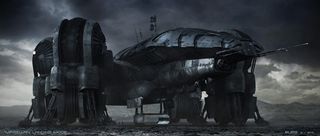
Above is Steve Burg's awesome design for the Prometheus (originally called Magellan). Ben Proctor did the fabulous detail design and the whole model was realized by the very talented Rory Woodford. Steve thinks it looks like a turtle.
02. Purpose
This is form follows function. Does the ship look like what it's supposed to rbe? Alien? Terrestrial? Freighter? Tanker? Does the scale suit the purpose? You wouldn't have a battle cruiser that looks like it's only 30 meters long.
The great Ron Cobb is a master of form follows function. His designs from Alien to The Sixth Day are superb. I may get flak for this, but much as I loved the movie I don't think the District 9 alien ship looked at all alien. It looked like a flying terrestrial oil rig! It didn't match the alienness of the creatures.
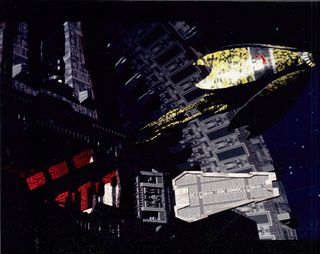
After reading (sci-fi novel) Dune I decided to build an Ornithopter Model. This was never used anywhere. Just a fun project. It was built to be stop-motion animatable. All of the claws were functional. It even had working fowler flaps (much like an airliner).
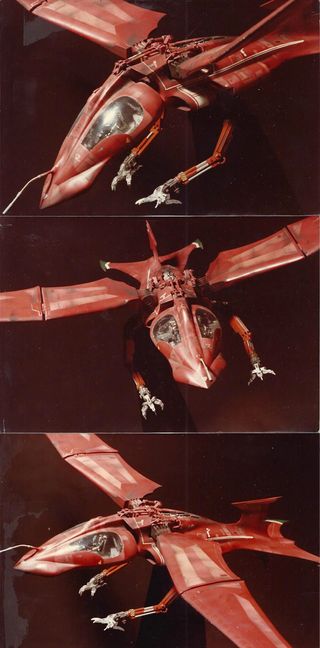
03. Rest
Have areas where the eye can rest. This throws any detail you have into better relief. Too much detail without a break ruins a design. This is SUPER important.
All good designs have an area where the eye can rest. It's about compositional contrast. Guiding the observers eye to the core elements of the ship. Modeler Paul Pepera is a master at this.
Too much detail without a break ruins a design
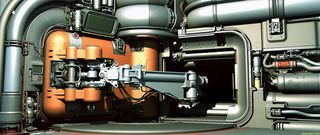
04. Recess
Make some recessed areas on the hull. Recessed detail suggests design confidence. Also recessed detail gives more areas of contrast and shadow, The size of detail in the recesses can add greatly to the impression of scale.
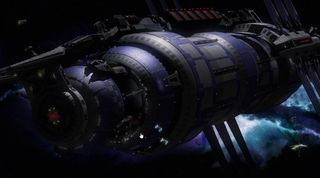
Above is Fabio Passaro's gorgeous update of my design for Babylon 5. The original was built to be rendered on an Amiga 2000 with 2MB of ram! We had some serious point and polygon limitations. You always know which way up B5 is because of the spine feature I added. The idea was that this was a weightless cargo/supply area.
05. Detail
Detail (nurnies) is all about the illusion of scale. Even something as aerodynamically smooth as an airliner has detail. Flap hinges, antennas, intakes, vents, panel detail. Even the slight wrinkling of the metal surface is a textural detail. This is one of the most important factors in a ship design, and, as such, can make or break a design.
Make sure the detail looks functional. Traditional modelers will use fine chips of plastic and kit parts to detail their Ships (called “Kitbashing”). We are even seeing great nurnie detail libraries from several sources, The Foundry sells a “Kitbashing” pack that has lots of neat Sci-fi detail elements.
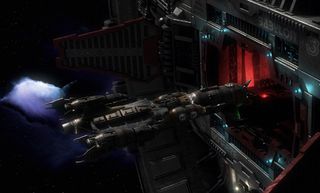
Paul Pepera often looks to abstracting mechanical parts. You can tell by the incredible functionality of Paul's work that he uses engine and mechanical parts often for inspiration. He will even sometimes buy random mechanical parts off Ebay to use as reference.
CG vs miniatures
There are certainly differences in how you design a ship as to whether you are going to make a miniature, or a CG model. The digital world certainly has allowed us to create ships that would be either impossible, or un-filmable in the practical world. But there is still certainly a use for miniatures.
There is no question now that miniatures are more expensive, but there are certain circumstances where they can be an option. Especially if the shots required are explosions or crash shots. I would love to work on a show where we built miniatures, and augmented them with CG.
Personal preferences
Ultimately, of course, the design process is very personal, and as vastly different from artist to artist as our personalities and differing tastes. But in the commercial world there is one important factor that can make or break a design...
Someone has to ask!
You can't do great design unless someone asks you to do it! If the director wants a ship that looks like a duck (I'm looking at you “Firefly”...), then that's what you get!
There's a phrase I heard a long time ago: "Genius is what you get when talent encounters opportunity". So, here's to all 3 components of that particular recipe!
Ron Thornton was the visual effects designer on Babylon 5 in seasons 1-3. He has also worked on other popular TV shows and feature films including Start Trek, Starship Troopers, Buffy the Vampire Slayer, The Crazies and Spaceballs.
Want more sci-fi? Go behind the scenes on Gavin Hood's military science fiction movie Ender's Game in the latest issue of 3D World - on sale now!

Thank you for reading 5 articles this month* Join now for unlimited access
Enjoy your first month for just £1 / $1 / €1
*Read 5 free articles per month without a subscription

Join now for unlimited access
Try first month for just £1 / $1 / €1
The Creative Bloq team is made up of a group of design fans, and has changed and evolved since Creative Bloq began back in 2012. The current website team consists of eight full-time members of staff: Editor Georgia Coggan, Deputy Editor Rosie Hilder, Ecommerce Editor Beren Neale, Senior News Editor Daniel Piper, Editor, Digital Art and 3D Ian Dean, Tech Reviews Editor Erlingur Einarsson and Ecommerce Writer Beth Nicholls and Staff Writer Natalie Fear, as well as a roster of freelancers from around the world. The 3D World and ImagineFX magazine teams also pitch in, ensuring that content from 3D World and ImagineFX is represented on Creative Bloq.
Related articles
-
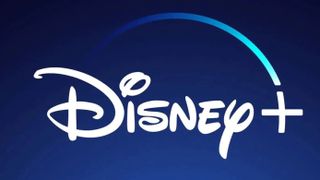
-
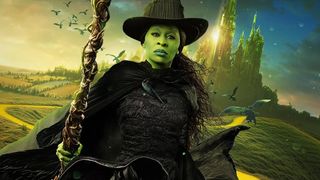
-
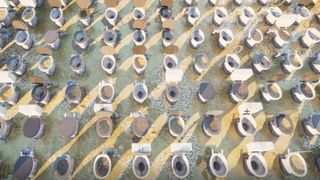
-
